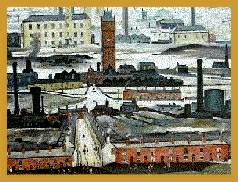-
In 1800, parliamentary laws in England
forbid the formation of trade unions. In 1825, some liberals
persuaded Parliament to legalize trade unions. After this, many
trade unions were formed everywhere in Europe and in the U.S.A.
Their main demands included an eight- hour workday, the right
of trade unions to bargain collectively with the employer, sanitary
and safer working conditions, enhanced wages and prohibition
of child labor.
-
In 1867, the Reform Act was passed,
permitting the workers of Great Britain to enjoy these political
rights. In the U.S.A. as well as in most of the industrialized
countries of Europe, workers were allowed to enjoy political
rights.
-
The workers then agitated for social
legislation that would improve their working and living
conditions. In 1880, Germany, under Chancellor Bismarck, undertook
social legislation providing for accident insurance, regulation
of child labor, maximum hours of work, old age insurance and
inspection and supervision of factories and mines by government.
Other countries also imitated Germany’s attempt to aid labor.

Exhibit 8.5
An artist’s view of Industrial England
E. Growth of Socialism and Communism
Social evils sprang up, owing to the factory system
and communism. Some early socialists like Saint Simon, Charles Fourier,
Louis Blanc and Robert Owen stood up to remove these evils. They
were called the Utopians. The socialist movement was a peaceful
one upto 1848. It aimed at eliminating the capitalist class and
substituting some form of working class ownership and control of
the means of production.

Exhibit 8.6
The father of Communism: Karl Marx
In 1848, Karl Marx and Friedrich Engels issued
the ’Communist Manifesto’ which introduced scientific socialism
or Communism. Later, in 1867, Marx and Engels published the first
of three volumes, entitled Das Kapital, in which they explained
the sum and substance of Marxian Socialism or Communism. The ideas
of Marx influenced world thought. Thereafter Soviet Russia adopted
Communism, while other European countries like Britain and France
began to follow socialism.
|
Index
8.0 -
Introduction
8.1 Meaning
8.2 Features of Industrial Revolution
8.3 Origin of Industrial Revolution
8.4 Course of Industrial Revolution
8.5 Spread of Industrial Revolution
8.6 Consequences of Industrial Revolution
8.7 Dates & Events
8.8 Points to Remember
Chapter 9
|